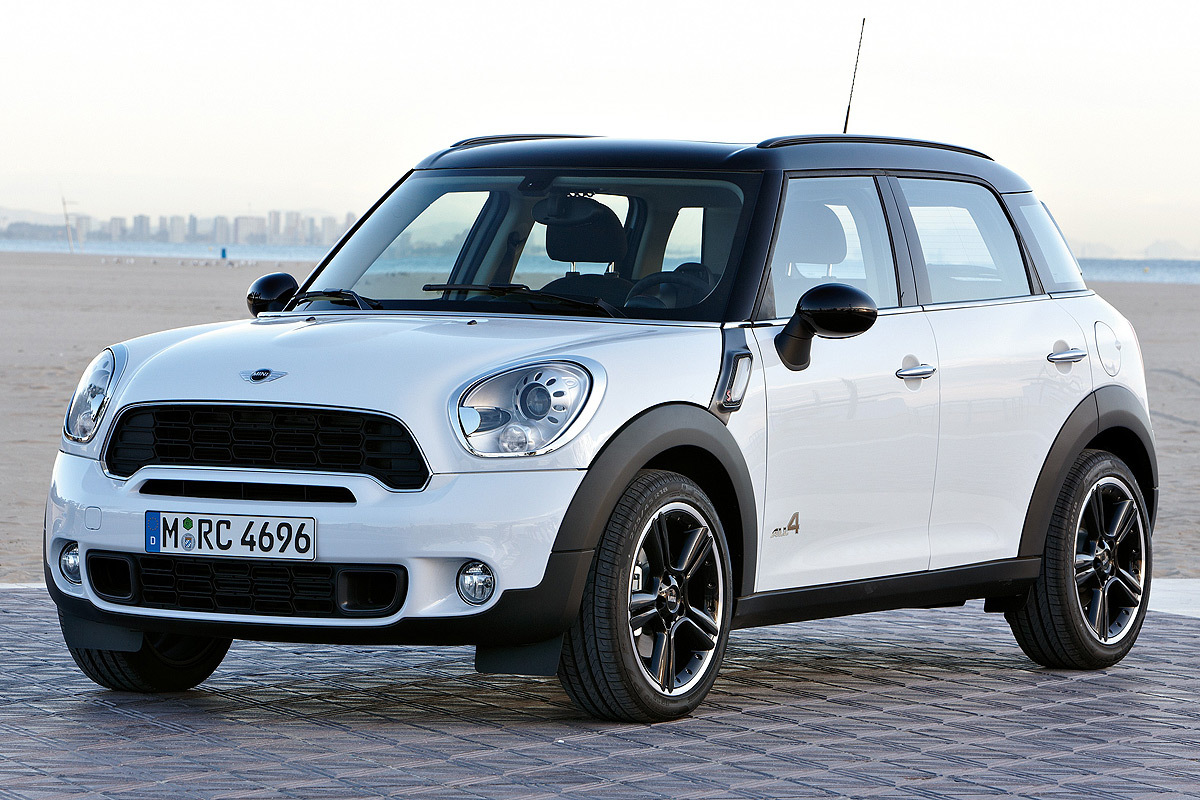The Countryman was the first five-door, family-sized Mini. Now, it’s been updated with more rugged styling, lower running costs and clever equipment options. Jonathan Crouch reports
Familiar Mini engines have been designated to power the Countryman but they’re all a bit more efficient these days.
There are four petrol and three diesel four-cylinder units offered, opening with the 89bhp diesel in the Countryman One D and progressing up to the turbocharged 218bhp petrol engine with variable valve management in the John Cooper Works model.
The only actual performance change is to the petrol Cooper S variant which now gets a 10bhp power hike to 190bhp, marginally reducing its 0-62mph sprint time to 7.5 seconds. All the Countrymen have a six-speed manual gearbox as standard but a Steptronic automatic is available as an option on all but the entry-level diesel.
Customers for the petrol Cooper, Cooper S, Cooper D and Cooper SD variants also have the option of the ALL 4 all-wheel drive system that’s standard on the John Cooper Works range-topper. It’s an advanced set-up with an electro-hydraulic differential to vary the power distribution between the front and rear axles according to the detected levels of grip.
Under normal conditions, 50% of the engine’s output is sent to the rear but as grip is lost, up to 100% of drive can go in that direction. This should add a further dimension to the Mini’s acclaimed on-road handling. And it does. Throw the car hard into a corner, and it becomes clear that you’re driving something quite different from the Minis we know and love. It rides 10mm higher than the brand’s ordinary three-door model and it’s nearly 300kg heavier, statistics that have to tell somewhere. But by some margin it’s still the best driver’s choice in a segment not noted for setting any standards in dynamic prowess.
Mini has a winning design formula based around the key themes of the 1960s original and, by golly, it’s going to stick to it. The Countryman displays all of the brand’s usual traits from the foursquare stance with the wheels pushed right out to the extremities of the vehicle to the unmistakable font end with its rounded headlamps.
As for the changes to this revised version, well, there’s a revised front grille, the no-cost option of a contrasting black or white paint finish for the roof and wing mirror caps and the option of a piano black exterior trim package. Variants with the ALL4 all-wheel drive system get underride guard elements in both front and rear elements (and the side sills) for extra SUV-style appeal.
The usual Mini trim level hierarchy continues to apply to the Countryman, with One, Cooper, Cooper S and John Cooper Works models being made available and prices starting from around £17,000. As is the norm elsewhere in the Mini line-up, the Cooper S and John Cooper Works cars have a lot more visual aggression about them with a redesigned front grille and more shapely bumpers. Safety-wise, all cars get front, side and curtain airbags along with three-point seatbelts for all occupants.
Standard equipment runs to air-conditioning, rear park distance control, a high-end CD stereo and that clever Centre Rail storage system but this larger, more practical Mini still has the plethora of personalisation options that have proven so popular with customers of the smaller cars.
Safety-wise, daytime running lights and tyre pressure control are both now standard. Numerous styling features are available and there’s a variety of integration options for MP3 players and Smartphones. The sports suspension option can lower the car by 10mm and there’s a series of John Cooper Works performance components to choose from.
The Countryman has cleaned up its act in recent times, with all engines meeting the tough EU6 exhaust emissions standard. We’ve come to expect a whole bundle of features geared towards maximising efficiency on Mini products and the Countryman lives up to this. Brake Energy Regeneration, Auto Start Stop and ancillary engine systems that operate only when called upon rather than constantly pumping away in the background all help to lower fuel consumption. The updated models also get optimised air ducting in the underbody area, low rolling resistance tyres and wheel bearings with a lower friction coefficient. Every little helps you see.
There’s also a gearshift indicator for the manual models and the optional Steptronic automatic has its own efficiency benefits. Most frugal is the One D diesel version, which returns 67.3mpg on the combined cycle and puts out 111g/km of CO2,but even the rapid petrol Cooper S model now manages 47.1mpg and 139g/km.
The Countryman is a Mini – but not as many will know it. But then, if it was, this Countryman wouldn’t be able to continually keep existing Mini people loyal when they out-grew their city runabouts and shopping rockets. Nor would 80% of its sales tempt in buyers new to the brand. Customers liking the vibrant SUV-inspired Crossover concept, but wanting it with a little more tarmac sparkle.
This Countryman has achieved both these things, though at the cost of British style and build. Now cleaner under the bonnet and smarter inside and out, it’s as suited to the urban jungle as a Land Rover is to the Amazon, a car created for the times we live in. And a Country you could be proud of.
